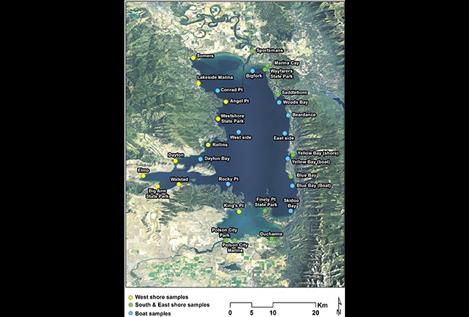Efforts underway to contain invasive mussel spread
Hey savvy news reader! Thanks for choosing local.
You are now reading
1 of 3 free articles.
News from Flathead Lake Biological Station, DNRC and FWP
MONTANA — Montana Fish, Wildlife & Parks have now detected mussels at four locations in Montana. Fortunately, these mussels have not been detected in Flathead Lake, the Flathead watershed nor anywhere in Northwest Montana. Invasive zebra/ quagga mussels have now been detected in Tiber Reservoir, Canyon Ferry Reservoir, the Missouri River near York and the Milk River near Malta.
Governor Steve Bullock signed an executive order Nov. 28 declaring a statewide natural resource emergency for all Montana waters due to the discovery of invasive mussels.
The Department of Natural Resources and Conservation, FWP, and Montana Invasive Species Advisory Council have formed a rapid response effort, including a unified Mussel Incident Response Team and a Joint Information Center. DNRC and FWP approved a request Dec. 1 by the Montana Mussel Response team to impose immediate temporary emergency restrictions on the launch or removal of all boats, docks, and other structures for Tiber and Canyon Ferry reservoirs until the water bodies freeze over.
Matt Wolcott, Incident Commander for the State’s Mussel Incident Response Team, said the restrictions are necessary to prevent the potential spread of invasive aquatic mussels from the two reservoirs to other uncontaminated water bodies in Montana and elsewhere. Biologists with the Flathead Lake Biological Station sampled 30 sites around Flathead Lake for environmental DNA (eDNA) analysis alongside the Confederated Salish and Kootenai Tribes, FWP and the Flathead Lakers.
Because eDNA from mussels is highest for the year in November, the timing of the sampling is ideal for detection. More Bio Station eDNA sampling of Flathead Lake is planned in the spring and summer of 2017.
Bio Station Professor Gordon Luikart and his lab team will analyze the samples collected from Flathead Lake plus samples from more than 40 other Western Montana lakes.
Senator Steve Danies urged the Army Corps of Engineers to expedite the deployment of funds for watercraft inspection stations.
“We need to cut through the bureaucratic chatter and talk about what we need to do now to stop the spread of the invasive mussels which is negatively impacting our ecosystem and economy,” Daines wrote in press release.
Daines also secured language in the Water Infrastructure Improvements Act for the Nation (WIIN) Act, clarifying congressional intent that inspection stations are not just intended to be in the Columbia River Basin, they must be strategically located across Montana and the West to prevent transmission of these invasive species from all bodies of water.
















